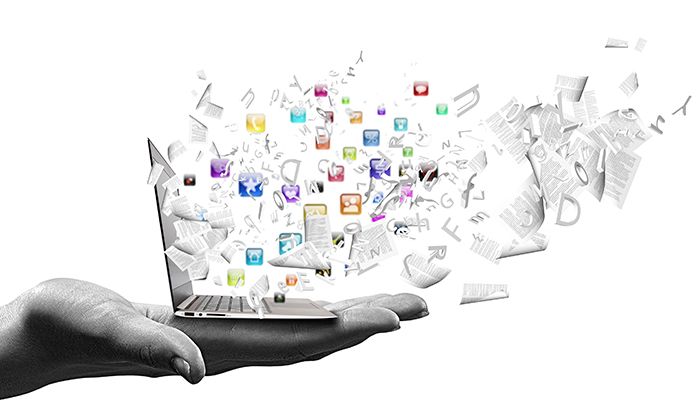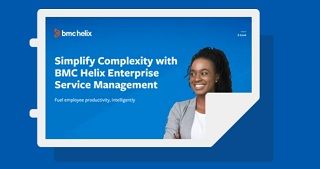“The medium is the message.”
– Marshall McLuhan, 1964
Almost 60 years ago, Marshall McLuhan proposed a theory that messaging is comprised of content and character, and furthermore the medium “shapes and controls the scale and form of human association and action.” Although he lists several examples to illustrate and support his theory, it has never been more evident than in the many ways that today’s successful modern enterprise organizations interact with and provide compelling experiences for their employees.
Evolution of communicating: mono-channel to omni-channel
Technology has enabled us to dramatically improve our communications because it removes the barriers of time and location and maximizes understanding by providing several ways to consume information. It has also opened the flood gates of communication channels. Try to imagine convincing people now that the best (and only) way to get news is through a newspaper, TV, and a small subset of known friends, which was the norm until late 2000s. Today, we derive our comprehension of the world by using more information sources and services—social media, search engines, AI-driven agents, voice interactions, and so on—than ever before to stay on top of our consumer lives and thrive.
But communications in the workplace can feel like taking a trip back in time. Most enterprises fall woefully short in how they engage with their employees, which only contributes to the time warp perception. As the lines between work and personal technology increasingly intersect and blur, the ability to deliver omni-channel engagements becomes a critical differentiator to both employee engagement and business success.
When an employee needs information, how and where do they search for it? Are they limited to the IT Help Desk, corporate email, instant messaging, or the kindness of co-workers? Further still, lines of business such as Human Resources (HR), Finance, and Procurement need an effective way to reach employees. As enterprises continue to navigate the ongoing challenges associated with the pandemic, it’s a business imperative that they be able to provide their workforce with the right tools and information to do their jobs effectively.
Building better experiences
Customer experience (CX) and employee experience (EX) strategy and design should be key considerations when implementing omni-channel solutions. CX is focused on everything that the customer touches when interacting with a physical or digital service—it’s about how customers engage with your brand. EX is centered around the employee experience, where the organization expands the scope of resources that contribute to overall employee well-being, beyond the HR function. It is integral to supporting overarching organizational goals, boosting productivity, and retaining talent.
Omni-channel capabilities in the workplace contribute to both EX, enabling employees to engage and communicate across the organization via their channel of choice—Slack, Microsoft Teams, WeChat, web browsers, mobile device, and more—and CX, allowing employees to extend those channels to customer communications. When these channels are configured with value-added experiences and knowledge management capabilities, employees can find the information they need, when they need it, delivered in the format they prefer. The benefits include less time spent searching for information, better employee engagement, improved self-sufficiency, and higher productivity.
An example of improved EX
Let’s look at an example: a BMC customer wanted to add the WhatsApp conversation capability to their employee self-service offering and was able to easily do so with the programmable services of the BMC Helix Platform. After a few simple configuration settings, the BMC Helix Virtual Agent is now enabled for WhatsApp sessions.
The resulting interaction looks like a native application specifically optimized for WhatsApp. With the scalability, flexibility, and modularity of BMC Helix, the organization was able to rapidly provide compelling interactions to its employees, and can continuously add new capabilities like real-time translation, intelligent knowledge search, and more as needed.
Conclusion
Organizational success depends on quickly enhancing, extending, and customizing not only the experiences of the employee, but also the way they are consumed. That’s why it is imperative to choose a solution that can easily, intuitively integrate with various channels so that the experience doesn’t seemed to be “hacked” or a “science project.” As we all know, innovative channels of communication are emerging at a rapid pace and enterprise organizations must be able to quickly take advantage of them, just as consumers do in their everyday life.
BMC Helix is specifically designed to deliver compelling employee engagements and optimized experiences that enable employees to work as efficiently as possible. To learn more, visit the web pages for BMC Helix Business Workflows, BMC Helix Digital Workplace, and BMC Helix Virtual Agent.







